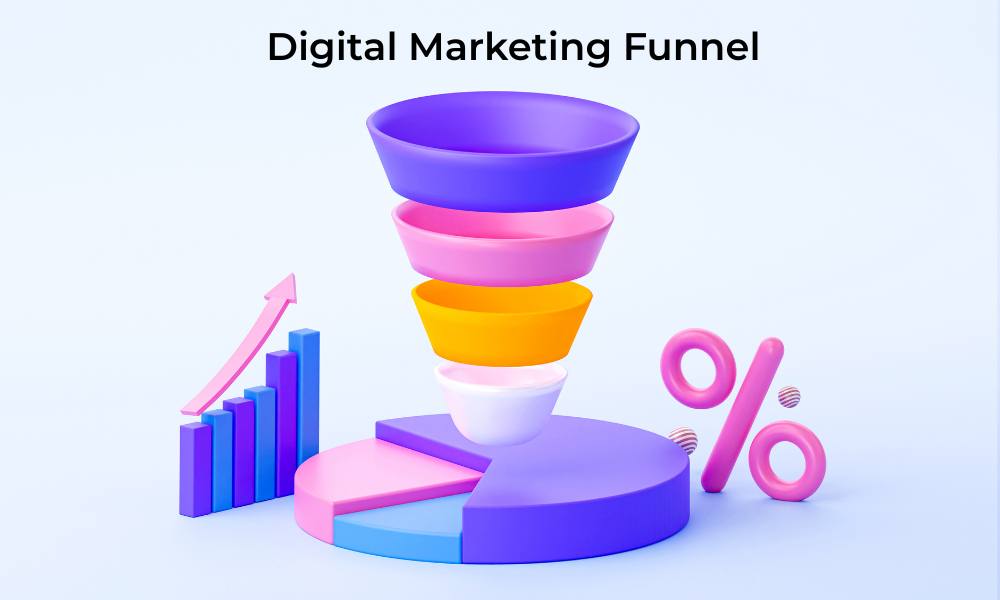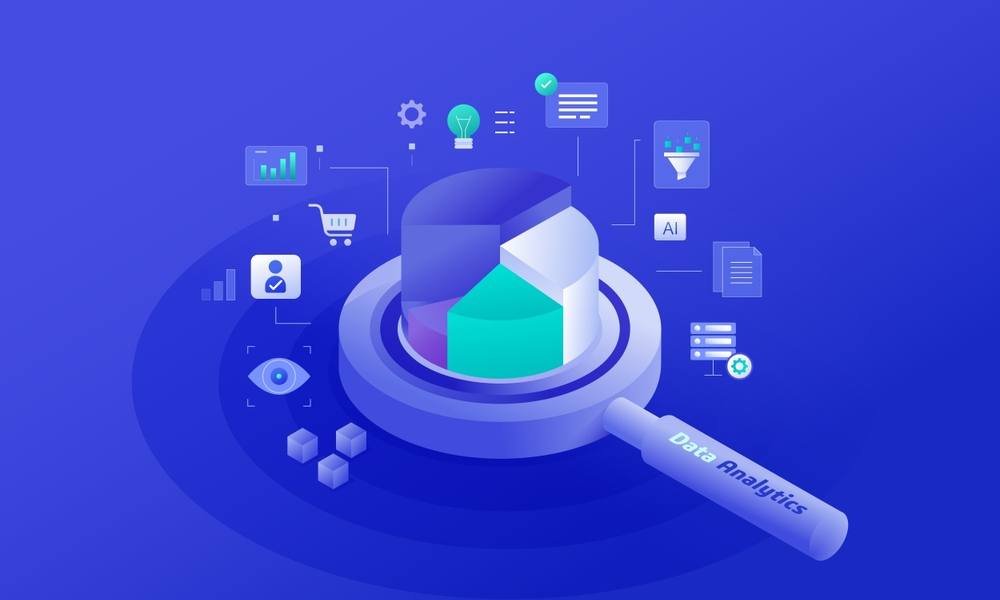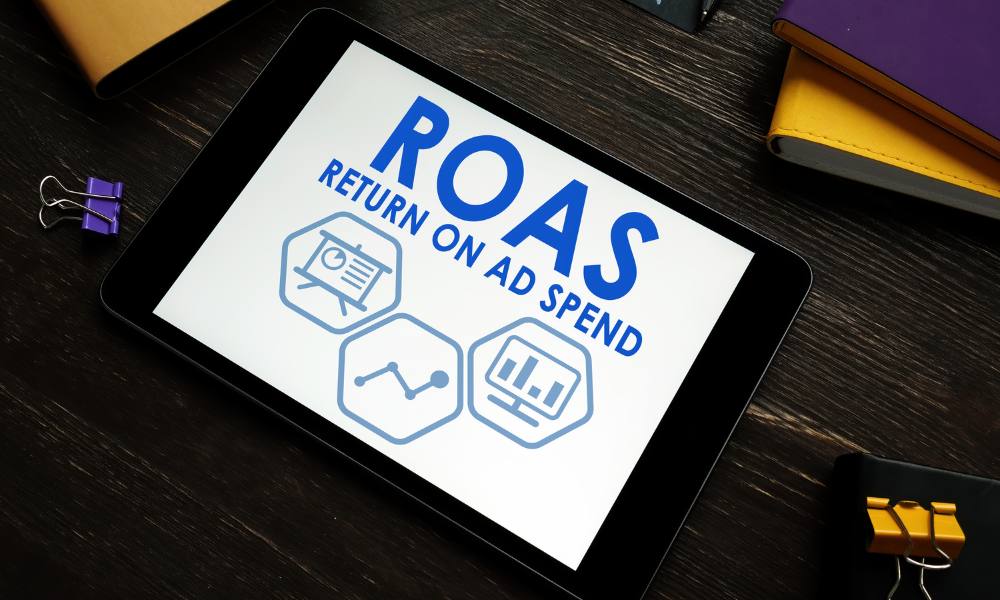
Ever feel like your leads vanish the second they click your ad? You’re not alone. I’ve seen dozens of funnels that attract attention, get a few nods, maybe a couple of curious clicks—then flatline. Crickets. No conversions. Just a faint sigh from your Google Analytics dashboard.
Let’s fix that.
In this guide, I’m going to walk you through how I build digital marketing funnels that don’t just look pretty in a deck—but actually work. Whether you’re running a SaaS startup, an e-commerce store, or consulting business, these principles apply.
What You’ll Learn
- How I structure each part of a marketing funnel with intention
- Where most funnels fail (and how I sidestep that)
- Tools and strategies I use (and don’t overuse)
- A real example from my client work
What Is a Funnel, Really?

Let’s keep it simple: a funnel is just a path you design to guide strangers into becoming customers—and hopefully, fans.
You start wide—blogs, videos, ads—to attract attention. Then, you narrow it down—emails, demos, offers—to close the deal.
I like to think of it like dating. You don’t ask someone to marry you on the first coffee. Same with leads.
Want a deeper breakdown of funnel types? I recently shared six different models over in this complete guide to digital marketing funnels.
Why Most Funnels Fail (And Yes, I’ve Fixed a Few)
Here’s what I see all the time:
- A TOFU blog post that talks in circles with no real value.
- MOFU content that forgets what pain point brought the lead in.
- BOFU offers that scream “buy now” without solving anything.
And don’t get me started on automation that sends follow-up emails… to people who already converted.
Let me show you how I approach it instead.
Start With the Audience, Not the Funnel Tool

I always start with this question: Who am I talking to?
Seriously, don’t build a funnel for “everyone.” That’s the fastest way to waste your ad budget. I dig into:
- What they search for
- Where they hang out online
- What’s keeping them from converting
You’d be surprised how much your funnel changes once you actually know the person on the other side.
Set a Goal for Each Stage
Each step of the funnel has one job.
- TOFU – Build awareness. Think: blog posts, social ads, videos.
- MOFU – Educate and nurture. This is where I drop case studies, email sequences, or maybe a demo.
- BOFU – Convert. Fast, smooth checkout. No 12-click forms. Maybe a chat popup with a real answer—not a bot with existential questions.
If you’re already running campaigns and wondering why your leads stall mid-funnel, check out my breakdown of digital marketing strategies that actually move people forward.
Align Content With Intent (Not Trends)
I’m not here for empty “content calendars.” I want content that speaks to the user’s moment.
Someone searching “best CRM tools for small business” is not looking for a guide on the history of spreadsheets.
I create content that answers specific questions at each stage. My rule: if it doesn’t solve a problem or move someone forward, it’s gone.
Traffic That Clicks Isn’t Enough—It Has to Care
You can run the prettiest ad campaign in the galaxy, but if you’re targeting the wrong crowd, it won’t matter.
When I run ads or push SEO content, I start by making sure I’m reaching the people I defined in step one—not just anyone with a pulse and a browser.
Sometimes, I’ll tap into social ads. Sometimes I use influencers. (And if you’re wondering how I find the right ones, my social media strategy breakdown might help.)
Automate—But Test Before You Brag
Automation is magic… until it’s not.
I once inherited a funnel that sent the same “nice to meet you” email six times. Not so nice after the third time.
I use tools like Mailchimp and ConvertKit. But I always test flows manually before letting them run wild.
And don’t get me started on overcomplicated Zapier chains. If it takes a whiteboard and three color-coded markers to explain your funnel… simplify.
Convert With Clarity, Not Clutter
At the conversion stage, clarity wins. Not cleverness. Not complexity.
- Your CTA should be obvious.
- Your forms should be short.
- Your checkout should work on mobile (yes, I still see this broken way too often).
If your user gets confused, they bounce. Simple as that.
And for those weighing whether to push email or ads harder at this point, I wrote about that tug-of-war right here.
Track the Right Numbers (Not Just the Pretty Ones)

I don’t care how many likes you got. If no one clicked or bought, it didn’t work.
Here’s what I watch:
- Conversion rate
- Customer acquisition cost (CAC)
- Bounce rate (especially on key landing pages)
- Return on ad spend (ROAS)
If I see a spike in traffic but no bump in conversions, that’s a red flag, not a brag.
Tools I Use (No Sponsorships, Just Reality)
Here’s my short list:
- Google Analytics: Obvious, but essential.
- Notion: I use it to plan funnel flows before building.
- ConvertKit: Email marketing that doesn’t drive me crazy.
- Hotjar: Great for watching where users rage-click.
I’m not married to any tool. I just want them to do their job without trying to upsell me every time I log in.
A Funnel That Worked (Real Example)
I had a SaaS client with a solid product and zero conversions.
We rebuilt their funnel with:
- A TOFU guide that tackled one problem directly
- A MOFU webinar invite tied to that problem
- A BOFU offer with a 7-day trial and live demo
The result? 34% increase in qualified leads. 3.7x return on ad spend. And no more crickets.
Common Mistakes I Still See
Here are the top three funnel sins:
- Using one generic lead magnet for every ad. Stop it.
- Ignoring people after the sale. Your funnel shouldn’t end at “thank you.”
- Email sequences that sound like they were written by a corporate bot. Be human.
And please, for the love of conversions, don’t make people scroll 16 times to find your CTA.
Final Word: Let’s Make Your Funnel Less Leaky
Funnels don’t need to be complex. But they do need to be intentional.
Start with your audience. Guide them logically. Keep things clear. And always ask, “If I were the user, would I care about this?”
If not—fix it.Want to dive deeper into how digital marketing is changing? My 2025 marketing outlook is worth a read if you’re serious about staying ahead.
